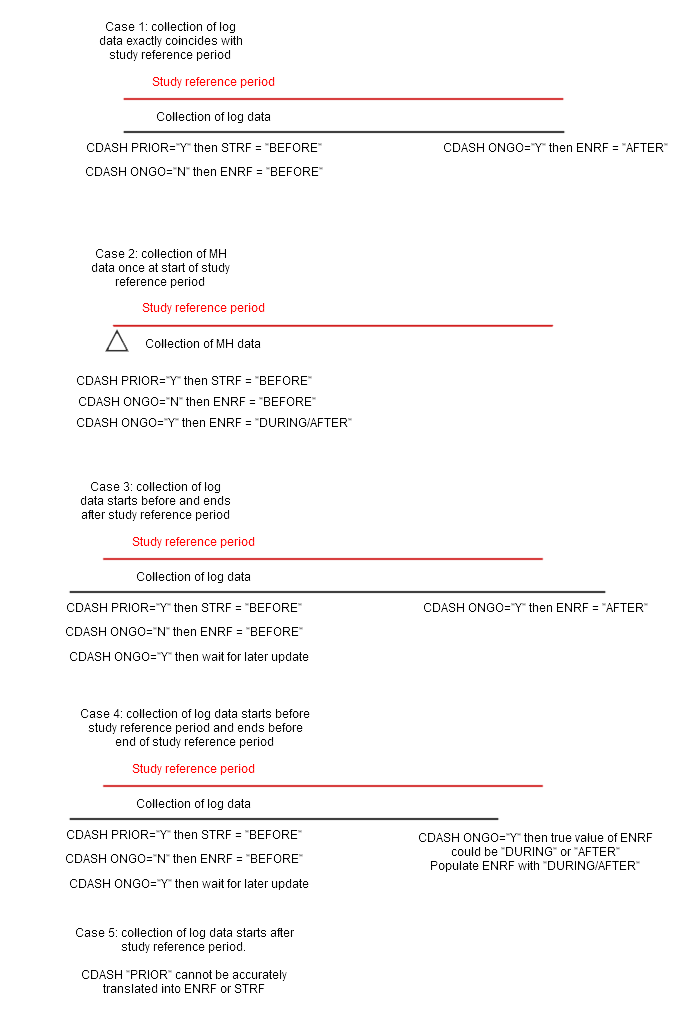If data is collected in a log form, and If you know the range of dates or visits for collection of log data then
- The date or visit at which the log is initiated can be used to populate STTPT and CDASH PRIOR or ONGO can be used to populate STRTPT.
- The date or visit at which the log is finalized can be used to populate ENTPT and CDASH PRIOR or ONGO can be used to populate ENRTPT.
- STRF and ENRF are not needed and should not be used.
However, it is fairly common for neither the date nor the visit on which the log is started or ended to be recorded. In these cases, STRF and ENRF can (usually) be used. Just how they are populated depends on how the period over which log data is collected compares to the study reference period.
In this diagram:
- The red line represents the study reference period, as represented by RFSTDTC and RFENDTC in the SDTM Demographics (DM) domain.
- The black link (or in case 2, the black triangle) represents the time period over which data is collected in a log page.
- When there is a black line, the words in the left-hand column correspond to data collected at the beginning of the log period, while the words in the right-hand column correspond the data collected at the end of the log period.
- For case 2, the only data collection is at the beginning of the study reference period.
- Words explain how collected CDASH values are used to populate the SDTM variables --STRF and --ENRF.

The problematic case is Case 5. Luckily, this case seldom arises in practice, since log data collection is almost always initiated before the date that would be considered the start of the study reference period.